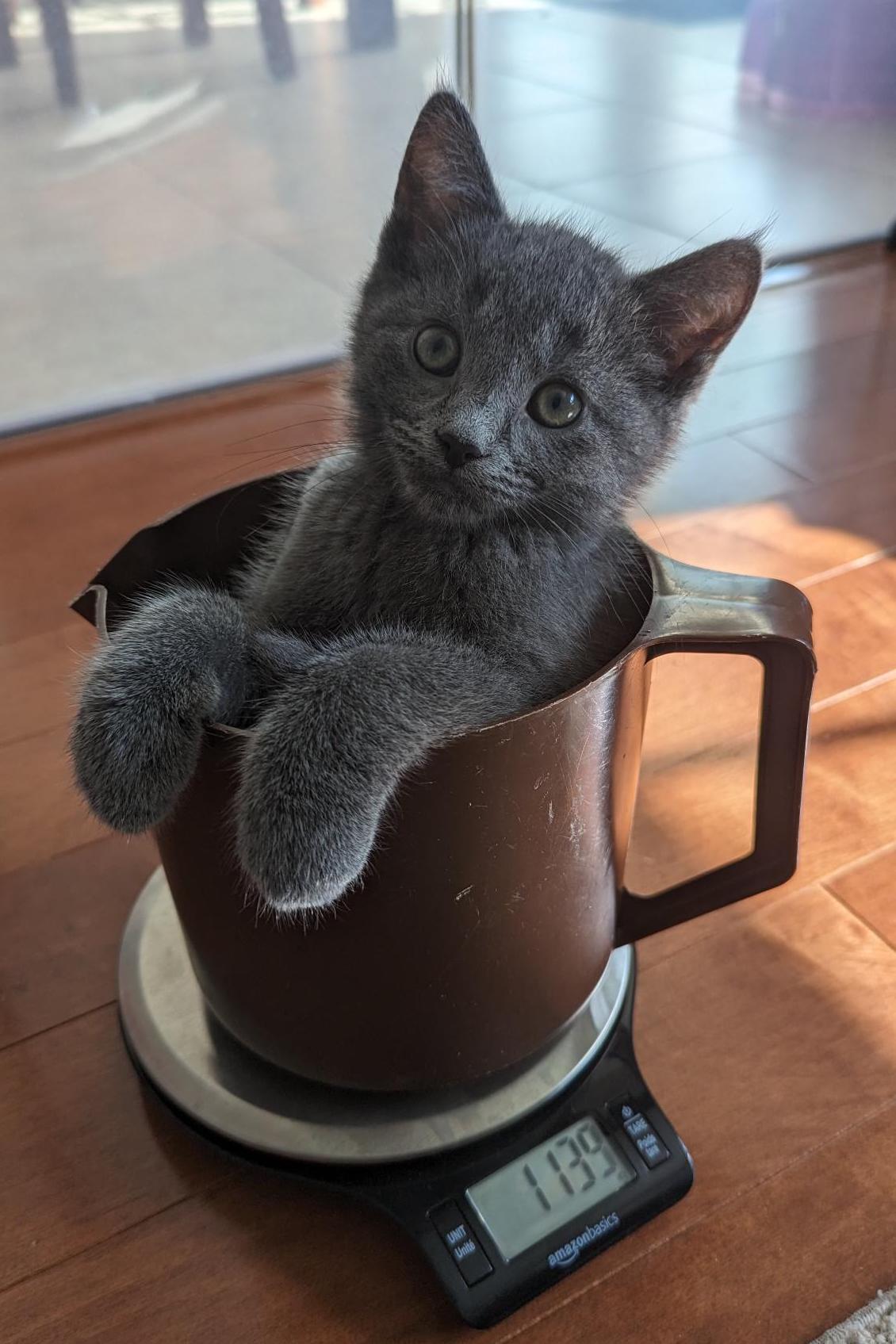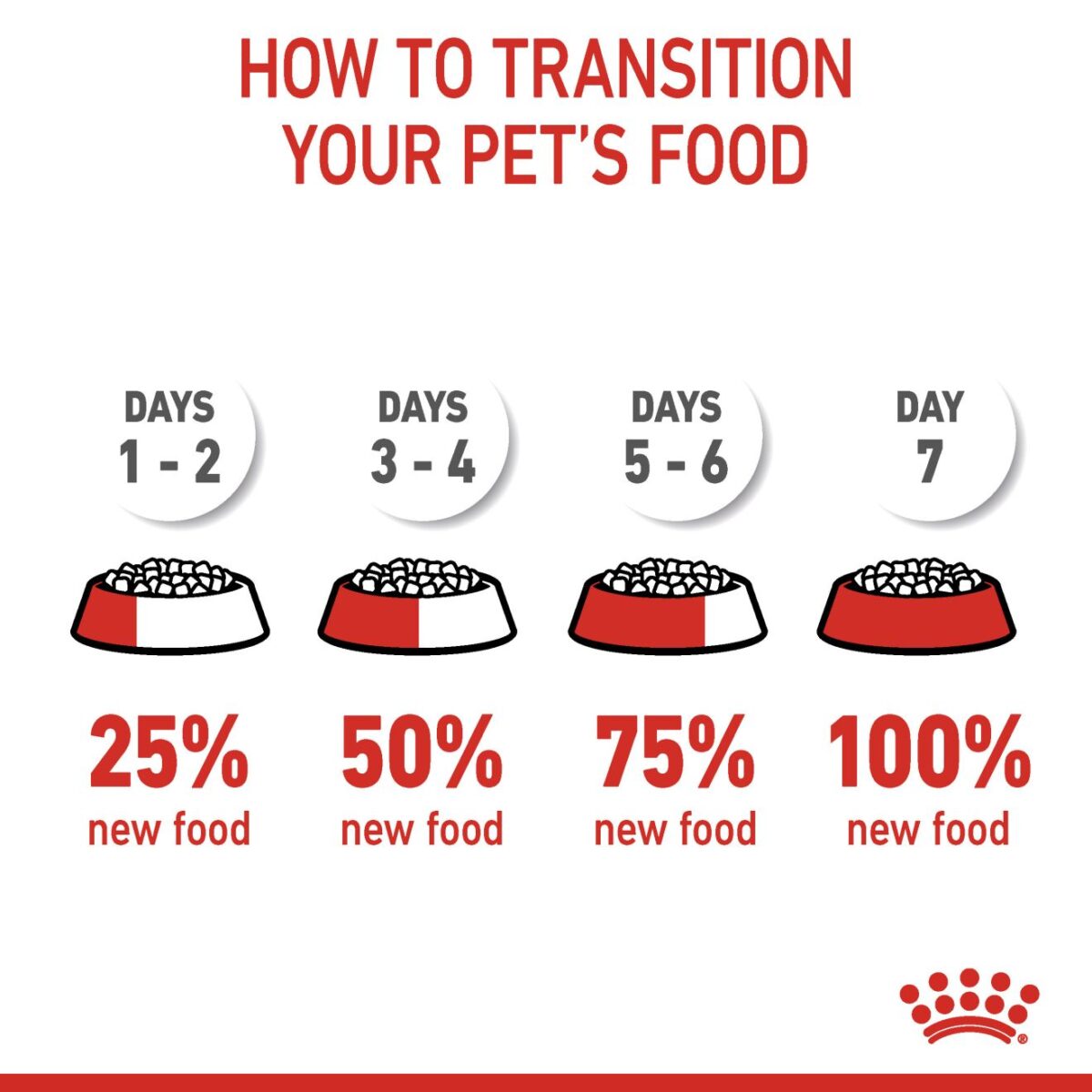Spayed, Neutered, and Thriving: Kitten Nutrition Essentials
by Ontario SPCA and Humane Society | Cat Care | December 5, 2023

Guest blog by Dr Emmanuel Fontaine, Scientific Communications Veterinarian at Royal Canin North America
“An ounce of prevention is worth a pound of cure.” This quote from Benjamin Franklin is something pet parents should always have in mind. This is especially true when thinking about spaying and neutering. Indeed, this is today a common surgical procedure, often performed on kittens as early as 8 weeks. This surgical intervention comes with a myriad of health benefits, including an increased life span and prevention of certain medical disorders, (not to mention its contribution to controlling cat populations obviously!). However, there’s a catch that all kitten adopters need to be aware of – spaying and neutering can increase the risk of kittens becoming overweight! And that’s where the importance of proper nutrition comes in. In this blog, we’ll explore the vital role nutrition plays in supporting the well-being of spayed and neutered kittens, and how it can help mitigate the overweight risk we just mentioned. So, let’s focus on the top questions pet parents have about their kitten’s dietary needs after spaying and neutering!
#1 How do my kitten’s nutritional needs differ from an adult cat’s?
Understanding the impact of spaying and neutering on a kitten’s nutritional needs is crucial for their overall health and wellbeing. It is important to acknowledge the unique circumstances surrounding the timing of the procedure, as it typically occurs during the growth phase of a kitten’s life. This means that their nutritional requirements are different from those of adult cats.
The primary difference lies in the need for additional nutrients to fuel a growing kitten’s body. Kittens require more energy, protein, vitamins, and minerals compared to adult cats. A well-rounded diet for kittens should be rich in high-quality protein sources, which are essential for growth. Proteins help build strong muscles and support a healthy immune system, enabling your kitten to thrive.
However, there are more nutrients to consider for your kitten’s diet. For instance, DHA (docosahexaenoic acid) is an important nutrient to support brain development. In kittens, brain development occurs rapidly; by three months of age, their brain is nearly the size of an adult cat’s! Omega-3 fatty acids like DHA have been shown to enhance visual and cognitive development, making them crucial components of a kitten’s diet.
Antioxidants, betacarotene, and betaglucans are also important nutrients for kittens. These compounds help support immune function, which is particularly important during the early stages of a kitten’s life when they are more vulnerable to illnesses.
Another important aspect of a kitten’s diet is prebiotics. Prebiotics are nutrients that support the growth of beneficial bacteria in the gut, collectively referred to as the microbiome. The microbiome is a complex community of microorganisms living in the digestive system that play a vital role in maintaining overall health. In simple terms, the microbiome can be considered as a “mini ecosystem” within your kitten’s body, helping to digest food, produce vitamins, and maintain a strong immune system.
While these nutrients are essential for all kittens, spayed and neutered kittens require special consideration. Recent studies have shown that spayed and neutered kittens grow differently compared to their unaltered counterparts. If no specific nutritional measures are taken, these kittens are more likely to gain weight and experience increased fat accumulation.
Spaying and neutering alters a kitten’s metabolism, which may lead to weight gain if not properly managed through diet and exercise. To account for these changes, it is important to ensure that your spayed or neutered kitten receives the right balance of nutrients while avoiding excessive calorie intake.
When selecting a diet for your spayed or neutered kitten, look for one that is specially formulated to meet their unique nutritional requirements. These diets should provide adequate protein, vitamins, and minerals to support growth while maintaining a healthy weight.
In conclusion, providing proper nutrition for your spayed or neutered kitten is essential for their growth and long-term health. By understanding their unique nutritional requirements and selecting an appropriate diet, you can help ensure that your kitten develops into a healthy and happy adult cat. Remember to consult with your veterinarian for personalized advice on feeding and caring for your spayed or neutered kitten.
#2 How much should I reduce my kitten’s calorie intake after spaying or neutering?
Spaying and neutering, while offering numerous health benefits, can also lead to increased food intake, decreased energy needs, and reduced activity levels in kittens.
As a result, pet parents must make necessary adjustments to their kitten’s calorie intake to prevent excessive weight gain and maintain overall health, all while ensuring the nutritional requirements for growth are still met.
After spaying or neutering, as a general guideline, it is recommended to reduce your kitten’s daily calorie intake by approximately 25-30%.
Even with reduced calorie intake, spayed and neutered kittens still require adequate proteins, vitamins, and minerals to support their ongoing growth and development.
For this reason, it’s crucial to consider a diet specifically formulated for spayed and neutered kittens, which takes these different aspects into account.
Such diets are typically lower in calories and fat, yet still provide the essential nutrients needed for optimal health.
#3 What are the benefits of feeding my kitten a combination of wet and dry food?
Feeding your spayed or neutered kitten a combination of wet and dry food offers several benefits, providing a well-rounded approach to nutrition that caters to their unique needs, particularly when it comes to managing their weight.
- Satiety: Combining wet and dry food helps kittens feel fuller, as wet food typically has a higher volume due to its moisture content. This increased sense of fullness can prevent overeating and contribute to maintaining a healthy weight, which is especially important for spayed and neutered kittens.
- Hydration: Wet food promotes hydration due to its higher moisture content, supporting kidney function and digestion. Hydration is a critical aspect of a cat’s health, particularly due to their desert ancestry. Cats evolved in environments where water was scarce, which led them to develop a low thirst drive. As a result, they tend not to drink enough water to maintain optimal hydration. Feeding your cat a wet diet can help ensure adequate water intake, supporting their overall health.
- Palatability: Wet food is often more appealing to kittens, ensuring they consume essential nutrients for growth and development.
- Dental health: Dry food aids in dental health by reducing plaque and tartar buildup, thanks to its abrasive texture.
- Variety: Offering both wet and dry food introduces your kitten to different textures and flavors, promoting a diverse diet.
It’s essential to choose a wet food specifically formulated for spayed and neutered kittens and follow feeding guidelines for mixed feeding situations.
By combining wet and dry food, you can address various aspects of your altered kitten’s health and well-being while managing their weight effectively.
#4 How can I transition my kitten to a new food gradually and safely?
As we just discussed, transitioning your spayed or neutered kitten to a new diet (a kitten spayed and neutered diet) is an essential step in ensuring their long-term health.
Since food intake increases immediately after surgery, it’s recommended to switch to a diet formulated for spayed and neutered kittens even before the procedure, when possible.
Here’s how to transition your kitten to their new diet gradually and safely:
- Start slow: Begin by mixing a small amount of the new food with your kitten’s current food. Gradually increase the proportion of the new food while decreasing the old food over 7 days (see picture 1). This slow transition helps avoid digestive upset and allows your kitten to adjust to the new taste and texture.
- Monitor your kitten: Keep an eye on your kitten’s behavior, appetite, and bowel movements throughout the transition process. If you notice any signs of digestive upset, such as vomiting or diarrhea, consult your veterinarian for guidance.
- Maintain consistency: Stick to a consistent feeding schedule and follow the recommended portion sizes for spayed and neutered kittens. This consistency helps establish a routine and prevents overeating.
- Be patient: Some kittens may be hesitant to try new foods. Offer positive reinforcement and praise when they eat the new food and be patient during the transition process.

#5 How often should I feed my kitten?
Cats exhibit a unique feeding behavior, often consuming numerous small meals throughout the day, sometimes up to 20. This tendency may lead some pet parents to believe that filling their cat’s bowl to the brim and letting them self-regulate their food intake is the best approach. However, this method is not advisable, particularly for spayed and neutered kittens who face an increased risk of obesity.
Instead, portion feeding should be emphasized for these kittens to ensure they maintain a healthy weight. It is crucial to follow the feeding amounts recommended by your veterinarian or food manufacturer, accounting for your kitten’s age, weight, and activity level.
To accommodate their natural feeding patterns, you can divide the daily recommended portion into multiple smaller meals, providing structure while also satisfying their instincts.
This balance ensures that your spayed or neutered kitten receives essential nutrients without overeating, paving the way for a healthy and happy life.
#6 How can I prevent my kitten from becoming overweight after spaying or neutering?
Preventing weight gain in spayed and neutered kittens requires a multifaceted approach that goes beyond merely adjusting their calorie intake.
By combining various strategies, you can ensure the long-term health and well-being of your altered kitten.
- Balanced diet: as previously discussed, choose a diet specifically formulated for spayed and neutered kittens, which provides the essential nutrients they need while still accounting for their decreased energy requirements. These diets are typically lower in calories and fat but still rich in high-quality proteins, vitamins, and minerals necessary for growth and development.
- Portion control: Practice portion feeding. Divide the recommended daily amount into multiple smaller meals to accommodate your kitten’s natural feeding behavior while preventing overeating.
- Regular exercise: Encourage physical activity by providing toys, engaging in playtime, and offering opportunities for climbing and exploring. Exercise is crucial not only for maintaining a healthy weight, but also for promoting muscle tone, mental stimulation, and overall well-being.
- Monitor weight: Regularly weigh your kitten and adjust their food intake as needed. Consult your veterinarian for guidance on determining and maintaining an ideal weight for your kitten. A great tool to leverage here are the kitten pediatric growth charts, that will help you ensure your kitten is growing healthily. Those charts are available online HERE and are a great monitoring tool that each kitten owner should implement I believe! Don’t hesitate to talk to your veterinarian about them so they can guide you here.
References:
 Emmanuel Fontaine graduated from the Toulouse Veterinary School in 2004, he continued his studies at the Alfort Veterinary School (Paris) as trainee Vet in the domestic carnivore unit of the Reproduction Department. From 2005 to 2011, he worked at the Centre d’Etude en Reproduction des Carnivores (CERCA) [Research Centre for Reproduction in Carnivores], a unit specializing in pet breeding assistance. Emmanuel Fontaine is also qualified at the European College for Animal Reproduction (ECAR) and completed his PhD in 2012 on the use of GnRH agonists in canines. From September 2011 to September 2018, he worked as Technical Services Veterinarian for the PRO team at Royal Canada. He then was in charge of Scientific Communication for the Americas until August 2022. He now works as Senior Scientific Communications Veterinarian for Royal Canin North America.
Emmanuel Fontaine graduated from the Toulouse Veterinary School in 2004, he continued his studies at the Alfort Veterinary School (Paris) as trainee Vet in the domestic carnivore unit of the Reproduction Department. From 2005 to 2011, he worked at the Centre d’Etude en Reproduction des Carnivores (CERCA) [Research Centre for Reproduction in Carnivores], a unit specializing in pet breeding assistance. Emmanuel Fontaine is also qualified at the European College for Animal Reproduction (ECAR) and completed his PhD in 2012 on the use of GnRH agonists in canines. From September 2011 to September 2018, he worked as Technical Services Veterinarian for the PRO team at Royal Canada. He then was in charge of Scientific Communication for the Americas until August 2022. He now works as Senior Scientific Communications Veterinarian for Royal Canin North America.
Categories
Testimonial
Hats off to you
To all kind-hearted and hard-working people at SPCA: hats off to you. I love animals and admire the work you do.
